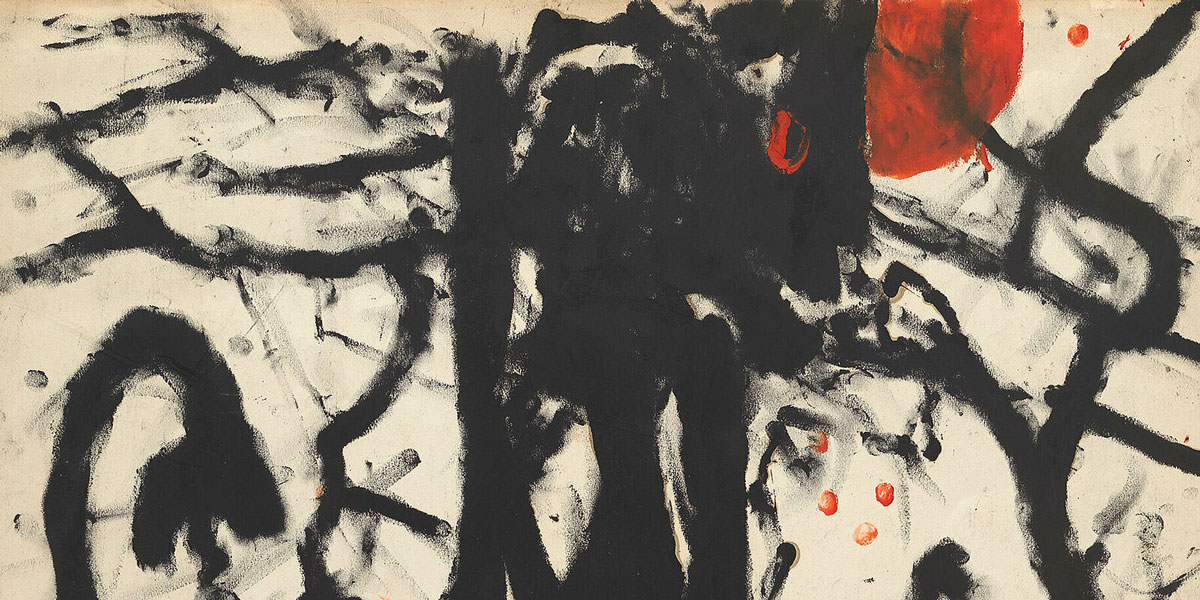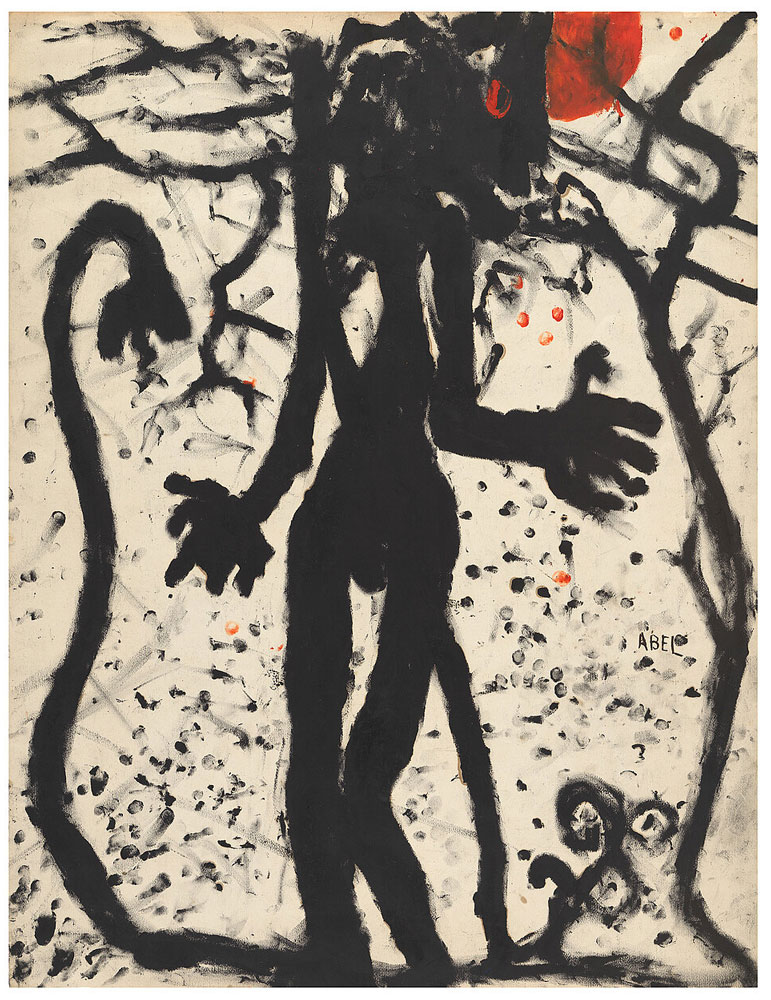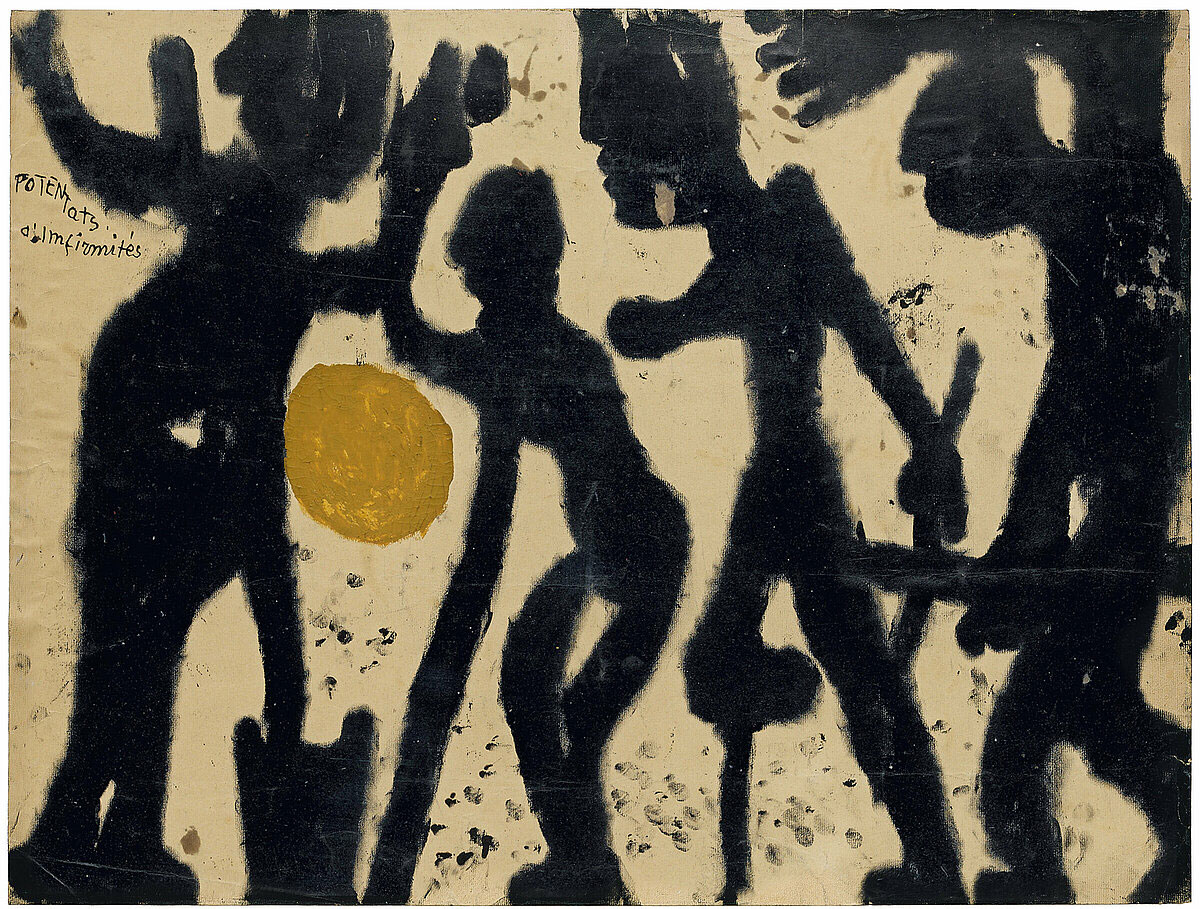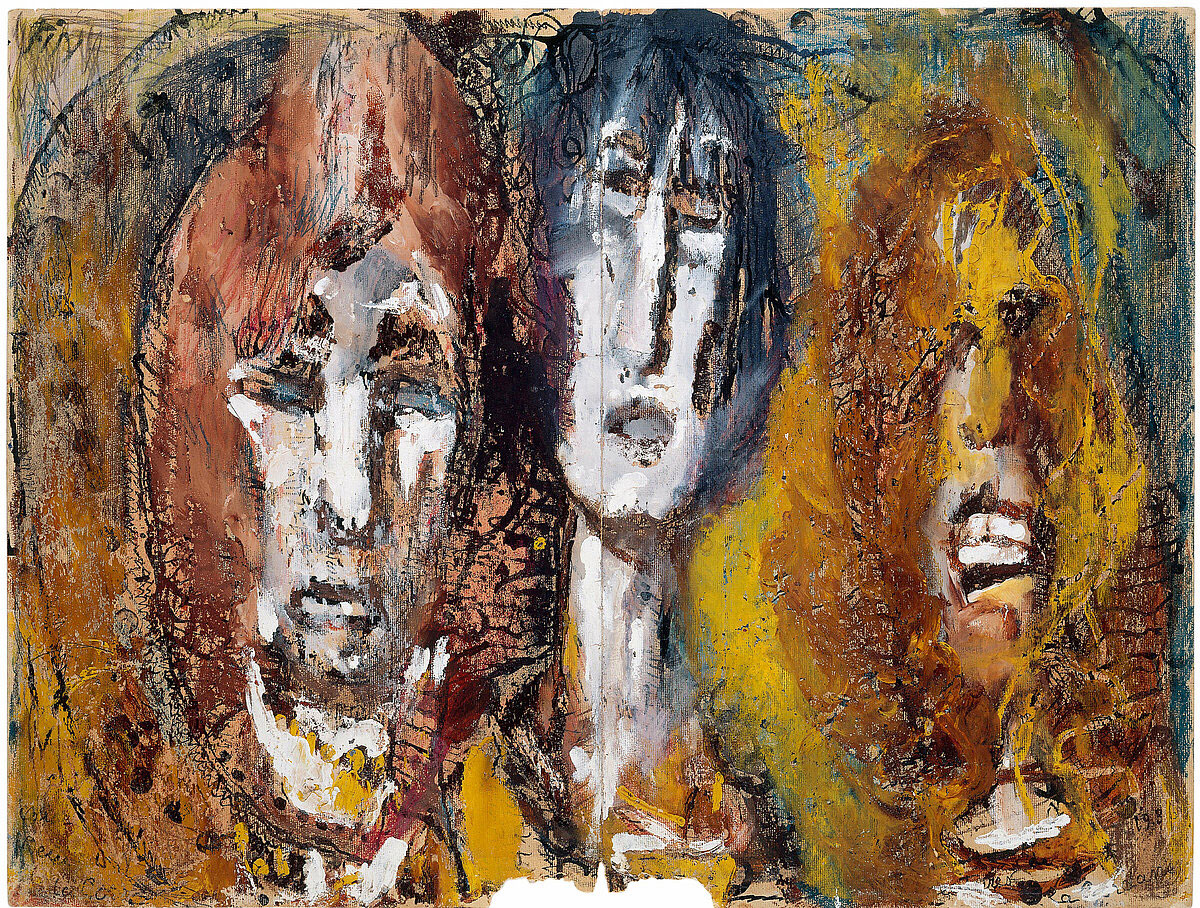PRESENTATION: Louis Soutter-Finger Painting
 Between 1923 and 1942 Louis Soutter, a singular practitioner of drawing and painting, realised over 2800 works in a unique genre, an output that goes beyond all the major trends of 20th century art history. Unlike the artists associated with Art Brut, Soutter is fully conscious of the art of both his contemporaries and the past. Whilst practicing figuration, he points the way to Tachisme and postwar informal art
Between 1923 and 1942 Louis Soutter, a singular practitioner of drawing and painting, realised over 2800 works in a unique genre, an output that goes beyond all the major trends of 20th century art history. Unlike the artists associated with Art Brut, Soutter is fully conscious of the art of both his contemporaries and the past. Whilst practicing figuration, he points the way to Tachisme and postwar informal art
By Efi MIchalarou
Photo: Galerie Karsten Greve Archive

In the exhibition “Finger Painting“ is on presentation a series of fourteen paintings created between 1930 and 1942, along with photographs of Louis Soutter taken by Theo Frey. This exhibition places particular emphasis on finger painting, a technique that enabled the artist to express his emotions and experiences on paper in a visceral fashion. A learned, cultivated and hypersensitive soul, Soutter suffered personal difficulties and professional failures, including his separation from his wife, the deterioration of his health due to typhus and the deaths of his father and sister. The accumulated blows to the artist’s psyche deeply impacted his art, adding a tragic dimension to his work. He gradually withdrew from the world. Soon deemed too eccentric by his relatives, in 1923, at the age of 52, Soutter was committed to a hospice for the elderly and destitute in Ballaigues, an isolated village in the Vaud Jura. There, he set himself to drawing intensively. His “Notebook period” was followed by his “Mannerist period”, during which he used ink, pencil and pen. When he ran out of materials, he drew at the post office in Ballaigues. In 1936, nearly blind and suffering from arthritis, he began his finger paintings and drawings. The practice enabled Louis Soutter to interact directly with his support. By using his finger to apply color directly, he created a physical link between his body and the paper, allowing his emotions an even more immediate form of expression. That tactile approach thus acted like a direct channel for his acuity and revealed a tortured inner world with a nebulous boundary between reality and imagination. Louis Soutter thus seemed to depict prophetic visions in his paintings – in “Potentats d’Infirmités”, for instance, mutilated shadows seem a striking premonition of the imminent historical drama of the Second World War. In his finger paintings and drawings, the evocative images that conjure the sun, the earth, fire and other natural elements become the settings for scenes that recall cave paintings and illustrate scenes of daily life, as well as pagan rites and mythological and biblical stories. Thus, “Le Jésu” Il est né/Christ en croix” and “Abel” show an interest in the Holy Scriptures. The red colour, reminiscent of blood, the part-human part-animal body, gigantic hands, spellbound gaze and snake that could be seen as a devil’s tail give the son of Adam and Eve, a figure from Genesis who was the first to die in the Old Testament, a demonic appearance. His works also echo myths and Greek tragedies through the use of black figures reminiscent of ancient ceramics. They are akin to a reflection on the gods, the human condition and the tragic destiny awaiting humanity. The anonymous bodies, alone or in groups, turned black silhouettes with extravagant proportions that stand out against a clear background, inhabit a universe linked sometimes to death, sometimes to magic. In consonance with his career as a violinist, Louis Soutter’s works exhibited today attest to a deep connection between his artistic expression and bodily sensitivity. The use of ink, watercolors, gouache and oil on paper or cardboard shows the diversity of his artistic exploration, which served an irrepressible desire to create. Born in Morges, Switzerland, in 1871, Louis Soutter started out on a promising artistic career path. As a talented violinist, he was initially a pupil at the Royal Conservatory of Brussels under the composer and conductor Eugène Ysaÿe, then he studied drawing and became close to the European painting avant-garde and, particularly, Les XX. In 1897, he emigrated to the United States, where he married Madge Fursman in Colorado Springs. He taught music and drawing and was later named director of the fine arts department at Colorado College. After separating from his wife, he returned to Switzerland in 1903. While he was the first violin of the symphony orchestra of Geneva, he lost his position in 1915. Deeply in debt and too isolated for his family’s tastes, in 1923, Soutter was committed to a centre for the elderly. Despite his reclusion, he was supported in his creative efforts by a handful of acquaintances including Jean Giono and the Vallotton brothers, who exhibited his works in their gallery in Lausanne, as well as his cousin, the architect Le Corbusier, who made him known to the public and wrote an article on him in the magazine Minotaure in 1936. Cut off from the world and his loved ones by the war, Louis Soutter died in the hospice in 1942.
Photo: Louis Soutter, Abel (detail), 1937 – 1942, ink and gouache on paper, Photo: Serge Hasenböhler, Courtesy Galerie Karsten Greve
Info: Galerie Karsten Greve, 5 Rue Debelleyme, Paris, France, Duration: 24/2-3/5/2024,Days & Hours: Tue-Sat 10:00-19;00, https://galerie-karsten-greve.com/


